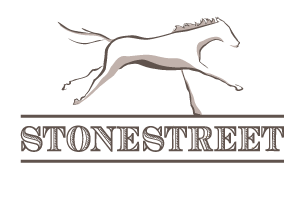Thoroughbred trainers wear many hats: they care for their horses like teachers, they manage their stables like CEOs, and they are often thrown into the media spotlight like celebrities. It takes a lot of hard work and determination just to become a trainer and even more to compete at the highest level of racing.
The first step in becoming a trainer is obtaining a trainer’s license. The licensing process ensures the integrity of the sport and its participants, and applications can be denied for criminal history. The trainer’s license is just one of 40 different categories of occupational licenses in each state Some positions have specific application criteria. The process of obtaining a trainer’s license is complex and necessitates a great deal of prior knowledge.
The application process for trainers varies from state to state but has two basic components: a written test and a practical exam. The written test is comprised of around 80 questions dealing with a wide array of topics such as equine health and the rules and regulations of racing. Violations of the rules can result in fines or disciplinary actions, which can put the stable at risk; well-educated trainers are less likely to make mistakes. For those interested in taking the trainer’s exam, study guides are available for purchase online.
After passing the written exam, the applicant’s practical exam is scheduled by the racing commission and occurs during the live race meet. Success in the practical exam relies on hands-on experience. Potential trainers may be asked to identify horse parts and apply equipment such as bridles, saddles, or wraps. If the applicant fails the practical exam, he or she may have to wait up to six months to re-take it. If they fail twice, it can take up to a year to receive another chance.
Most trainers develop the skills they’ll need to pass the practical exam through working on the backstretch, often as grooms or assistant trainers. They participate in the day-to-day barn activities and fine-tune their horsemanship skills. This time also allows them to build relationships with the veterinarians, farriers, and riders that will assist them when they strike out on their own. Many jurisdictions require letters of recommendation from current licensees that speak to the character and qualifications of the applicant, so it behooves them to make good impressions on their colleagues.
Successful trainers effectively manage both horses and humans. Preparing horses for race day is a collaborative effort, which requires a team comprised of hot walkers, grooms, exercise riders, foremen, and assistant trainers. Employees need to be on the same page and have the horse’s best interests in mind. Most trainers will establish a “home base” and will ship to other tracks across the country for races or race meetings. With horses potentially running in multiple states at a given time, trainers rely heavily on their staff to maintain their stable’s fitness. In addition to coordinating with staff, trainers are responsible for communicating with owners, planning workouts, advising jockeys on race strategy, and scheduling farrier and vet visits.
Trainers will receive 10% of the purse money won by the horses in their stable. They also charge a “day rate” of between $80-$120. The money they earn helps to cover expenses such as hay, grain, straw, worker’s compensation insurance, and the labor costs of their employees.
The saddles Thoroughbreds wear on race day belong to their jockey, but all the cost and maintenance of all their other equipment falls on the trainer. Many trainers choose to set their horses apart with branded or color-coded equipment. For example, horses trained by Todd Pletcher will wear his initials on their saddle cloths when they train in the mornings, and horses trained by Wesley Ward often wear his initials on their blinkers.
Lady Aurelia trains while wearing Wesley Ward branded saddle cloth and blinkers
Trainers often operate using the racetrack’s condition book as a framework for their training regimens. The condition book is the schedule of races for a given track. Trainers can identify races that will suit their horses and train with specific goals in mind. Since the condition book plays such a large role in a trainer’s day-to-day operations, questions on the ins and outs of its use frequently appear in the written exam.
Training Thoroughbreds is a demanding yet incredibly rewarding career. The long hours and years of preparation all pay off when standing in the winner’s circle.
